Once, all smartwatches spoke the same language: touchscreens, notifications, health metrics, and a faint glow of dependency on the smartphone. But the evolution of wearable tech has fractured that simplicity.
On one side remains the urban smartwatch—sleek, networked, a mirror of our connected routines. On the other, the tactical smartwatch—a machine that rejects fragility and noise in favor of endurance, autonomy, and silence.
They share a name, but they inhabit different worlds.
What Is a Tactical Smartwatch and What Makes It Different?
A tactical smartwatch isn’t a luxury accessory or a tech novelty. It’s a philosophy translated into hardware.
It is built around resilience as function, designed for people who treat weather, distance, and darkness as conditions to navigate, not to avoid.
Most consumer smartwatches are conceived as extensions of the phone: they relay, display, and simplify.
Tactical models are engineered for independence. Their design language comes not from fashion but from field instruments—altimeters, compasses, aviation chronographs.
Every element is purpose-driven: reinforced casing, matte surfaces to reduce reflection, physical buttons for gloved operation, and firmware stripped of unnecessary ornamentation.
If the conventional smartwatch asks, “What can I show you?”, the tactical version asks, “What can I survive?”
That single difference redefines the object entirely.
Key Features That Define a Tactical Smartwatch

A tactical smartwatch isn’t just a durable, rugged accessory. It’s a highly specialized tool, designed for extreme environments where failure isn’t an option. Here’s an in-depth look at what defines a tactical smartwatch, how its features are measured, and why they matter.
Rugged Construction for Extreme Conditions
- MIL-STD-810: This is the most rigorous military standard for testing the durability of electronics. It includes tests for shock, vibration, humidity, altitude, and extreme temperatures.
- Water Resistance: The ATM rating defines how deep the watch can go in water without being damaged. A 10 ATM rating, for example, indicates the watch can withstand depths of 100 meters.
- Drop Resistance: Watches undergo drop tests from specified heights onto various surfaces to ensure they can endure rough handling.
- Sapphire or Chemically Hardened Glass: More resistant to scratches and cracks than traditional glass, this feature ensures the screen can withstand direct impact.
- Reinforced Polymer or Titanium Alloy Casing: Strong, lightweight, and corrosion-resistant materials help the watch endure harsh conditions like saltwater exposure, extreme UV radiation, or deep dust storms.
Tactical watches are designed to survive in environments where traditional consumer electronics would fail. Whether exposed to rain, snow, dust, or shock, these watches are built to function.
For example, a tactical smartwatch that meets MIL-STD-810 is ready for military operations, extreme hiking, or any environment where a regular smartwatch might get damaged by the elements.
Extended Battery Life and Solar Charging
- Battery Life: The longevity of a tactical smartwatch battery is measured by how many days or weeks it lasts on a single charge, especially when not connected to external power.
- Power-Saving Modes: The ability to extend battery life through power-saving modes like GPS tracking only or low-power displays. Some models can last up to 50 days or more in power-saving mode.
- Solar Charging Efficiency: Measured by how much energy the solar panel can generate per hour of exposure to sunlight, usually in milliwatts.
- Solar Panels Integrated into the Bezel: Harvests sunlight to recharge the battery, ensuring that the watch remains operational without a wall socket for extended periods.
- Power-Saving Modes: By limiting certain functions like heart rate monitoring or notifications), the smartwatch maximizes battery life for specific tasks.
In the field, access to power can be scarce. Tactical smartwatches address this by incorporating long-lasting batteries and solar charging capabilities.
Multi-Band GPS and Offline Navigation
- Multi-frequency Satellite Systems (GPS, GLONASS, Galileo, BeiDou): Tactical watches are equipped with the ability to connect to multiple satellite systems simultaneously, improving location accuracy in challenging environments.
- Altitude and Orientation Sensors: Barometric altimeters and 3-axis compasses allow the watch to detect and calculate real-time elevation and heading data.
- Offline Maps: The ability to store and access maps and waypoints offline—critical for scenarios where cell service and internet access are unavailable.
- Track Recording and Route Reversal: Record your routes and retrace them offline, ensuring that you never lose your way, even when your phone loses its signal.
- Waypoints and Navigation Alerts: You can mark critical locations like campsites, emergency exits, or checkpoint markers and be alerted when you approach them.
Tactical smartwatches often need to function in areas where cellular connectivity is weak or nonexistent. They rely on multi-band GPS to deliver precise location tracking, whether you’re in the middle of a dense forest or a mountain range.
Multi-frequency satellite systems also provide greater accuracy, especially in areas with tall buildings or deep canyons where signals from traditional GPS systems may be obstructed.
Environmental and Weather Resistance
- IP Rating: This international standard measures the ingress protection. Tactical watches often feature a rating of IP68, meaning they are dustproof and can withstand continuous submersion in water for long periods.
- Thermal Shock Resistance: Tested for rapid temperature changes to ensure functionality in fluctuating temperatures (from freezing cold to intense heat).
- Barometric Sensors for Weather Monitoring: These sensors measure changes in atmospheric pressure and provide users with real-time weather forecasts, warning about incoming storms.
Thermally Tested: Can withstand a broad range of temperatures, from sub-zero conditions to high heat up to 55°C.
Weather Alerts: Tactical watches often feature storm tracking, temperature fluctuation, and wind speed readings, crucial for planning outdoor expeditions.
The ability to operate in extreme environments is a fundamental requirement for tactical watches. Whether you’re climbing a mountain, trekking through the desert, or navigating underwater, a tactical smartwatch needs to be weather-resistant.
Barometric sensors are particularly useful for tracking weather patterns and predicting changes like sudden storms, an essential feature for survivalists and military personnel.
Physical Controls and Usability in Harsh Conditions
- Button Size and Texture: Larger, tactile buttons that allow users to operate the watch with gloves or wet hands.
- Display Visibility: Watches are tested for screen visibility under harsh sunlight and in low-light conditions to ensure the screen remains readable without compromising battery life.
-
Button Navigation: Quick access to important functions like navigation, settings, and weather alerts with physical buttons.
Readable Displays: High-contrast displays that adjust automatically to ambient light, ensuring you can always read the screen, even in bright sunlight or pitch darkness.
Touchscreen smartwatches are often rendered useless when users are wearing gloves or in adverse conditions such as rain or snow.
Tactical watches are designed with physical buttons and high-contrast displays to ensure usability under extreme circumstances. This ensures that users can easily operate the watch even with cold or gloved hands.
Tactical Smartwatch vs Smartwatch: A Complete Feature Comparison
Tactical smartwatches and regular smartwatches serve distinct purposes. Below, we compare their key features across important dimensions to highlight what sets them apart.
| Feature | Tactical Smartwatch | Regular Smartwatch |
|---|---|---|
| Durability | Military-grade, shockproof, and rugged for extreme environments. | Lightweight, designed for everyday use with moderate durability. |
| Battery Life | 2–4 weeks, up to 50+ days in power-saving mode, with solar charging. | 1–3 days of battery life, requires frequent recharging. |
| Water Resistance | 5–10 ATM (50–100 meters), suitable for swimming and diving. | 3 ATM (30 meters), suitable for light rain and sweat. |
| GPS & Navigation | Multi-band GPS with offline navigation in remote areas. | GPS relies on phone connection, basic navigation features. |
| Display | High-contrast, sunlight-readable, and glare-resistant. | Standard touchscreen, often hard to read in bright sunlight. |
| Privacy and Security | Stealth mode, kill switch, local data storage, and strong privacy controls. | Basic privacy settings, data synced to the cloud. |
| User Interface | Physical buttons for operation in harsh conditions. | Touchscreen interface, better for indoor use. |
| Environmental Resistance | Resistant to extreme temperatures, humidity, and pressure. | Less resistant to extreme conditions. |
| Design | Rugged, utilitarian design with a focus on function. | Sleek, stylish design for everyday wear. |
Tactical smartwatches are built for extreme environments, offering rugged durability, long battery life, and advanced navigation. Regular smartwatches are ideal for everyday use, focusing on convenience, fitness tracking, and connectivity. The choice depends on your lifestyle and intended use.
Which Type Fits Your Lifestyle Better?
Choosing between a tactical smartwatch and a regular smartwatch comes down to your lifestyle and needs. Here's how each one fits into different life scenarios:
Urban Professionals and Everyday Users
Regular smartwatches are designed to integrate seamlessly into your connected lifestyle. They offer real-time notifications, fitness tracking, and easy access to apps and calls.
If your life revolves around staying organized, managing your schedule, and keeping up with notifications, the regular smartwatch is the ideal companion. It’s lightweight, stylish, and perfect for everyday wear.
Outdoor Enthusiasts and Adventurers
If you frequently explore remote areas or engage in extreme outdoor activities, a tactical smartwatch is your best bet. Built with rugged durability and extended battery life, it can handle extreme weather, rough terrain, and long trips without needing to recharge.
With features like offline GPS navigation and solar charging, you can rely on it even in the most isolated environments. It’s designed to keep working when a regular smartwatch would fail.
Extreme Sports and Military Use
Tactical smartwatches are engineered to withstand the harshest conditions. Whether you’re in military service, extreme sports, or high-risk professional environments, these watches offer advanced sensors, data privacy, and military-grade durability.
They are built for environments where failure isn’t an option, and where you need a device that can endure shock, pressure, and extreme temperatures while keeping you connected.
Fitness and Health Focused Individuals
For those committed to fitness and health tracking, a regular smartwatch offers detailed health metrics, from heart rate to steps, calories burned, and sleep patterns. It’s lightweight, comfortable, and designed for continuous wear.
The integration with fitness apps helps you stay motivated and track your progress easily. It’s perfect for gym-goers, runners, or anyone who wants to stay on top of their wellness goals without compromising on style.
Conclusion
Choosing between a tactical smartwatch and a regular smartwatch depends on your lifestyle and needs. Tactical smartwatches are built for extreme environments, offering durability, long battery life, and reliable navigation for outdoor adventures or demanding conditions.
On the other hand, regular smartwatches are perfect for everyday convenience, fitness tracking, and staying connected in daily life.
Ultimately, the right choice is the one that aligns with your environment and how you want to use the watch in your day-to-day routine.
FAQs
Do tactical smartwatches really last longer than regular smartwatches?
Yes. They’re built with military-grade materials, stronger casing, and better water and shock resistance. While battery life and hardware are designed for endurance, actual longevity still depends on usage habits.
What makes a smartwatch “tactical”?
A tactical smartwatch focuses on durability, independence, and field usability—featuring reinforced construction, offline GPS, stealth modes, and physical buttons that work in extreme environments. It’s built to perform, not just look smart.
Is a tactical smartwatch overkill for everyday use?
For most people, yes. If your day-to-day life is urban and connected, a regular smartwatch offers everything you need. Tactical models make sense only if you often face harsh conditions, outdoor missions, or rugged work environments.

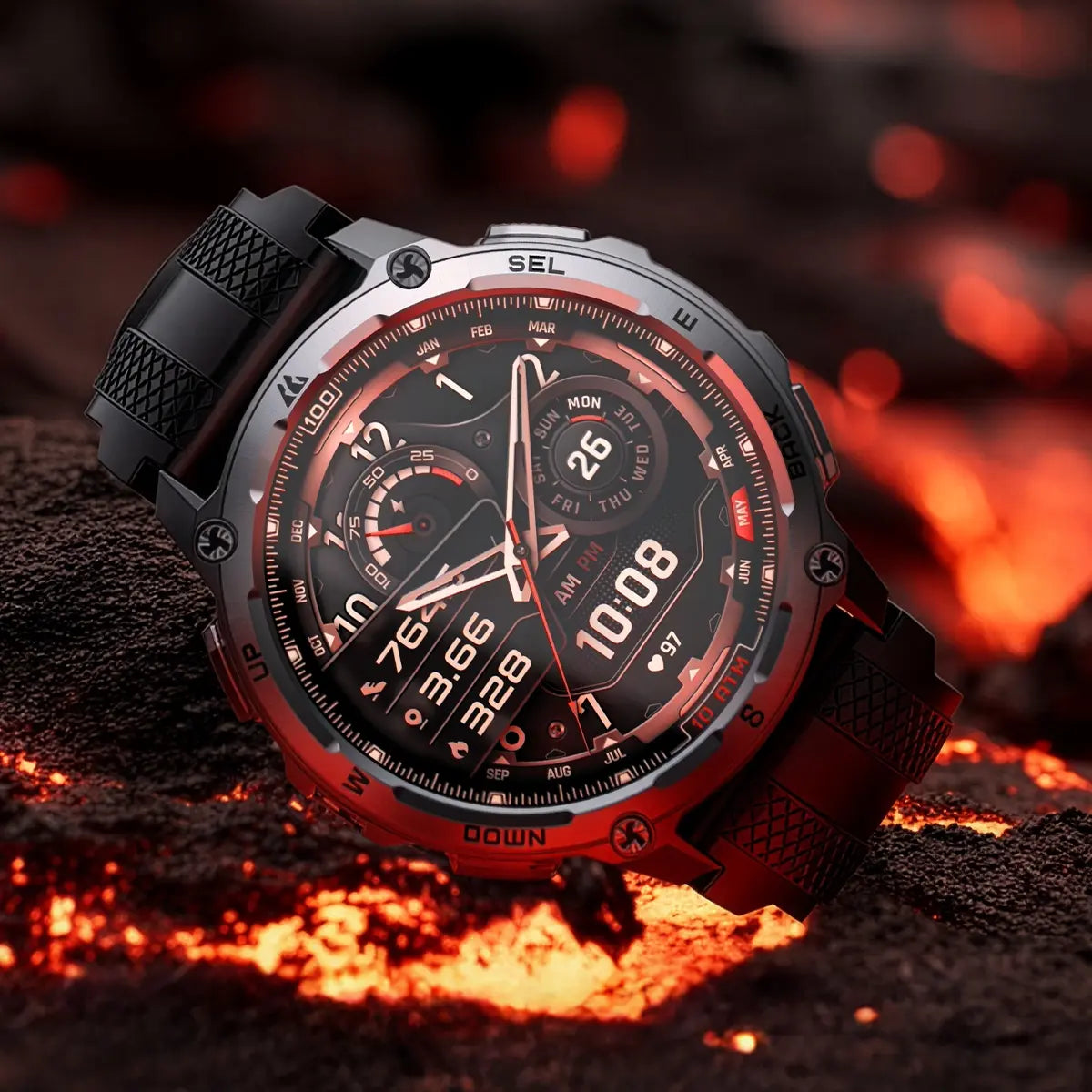

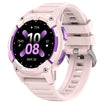
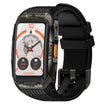

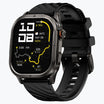
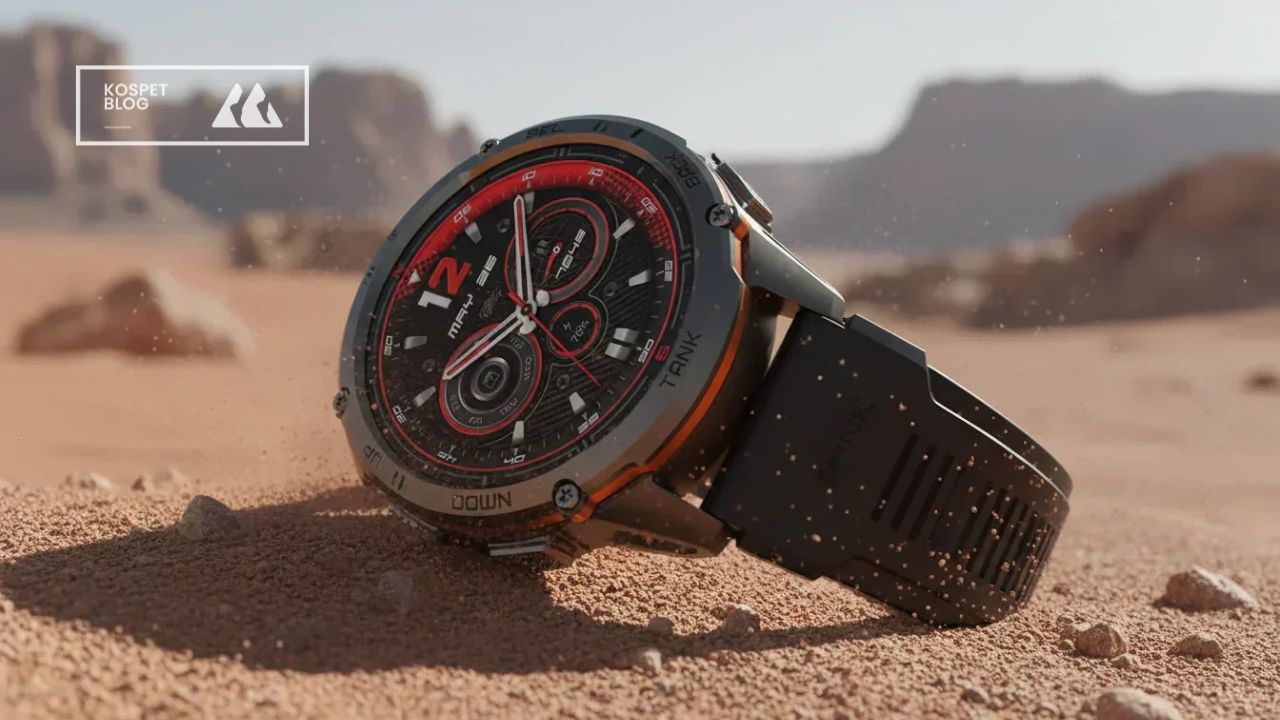

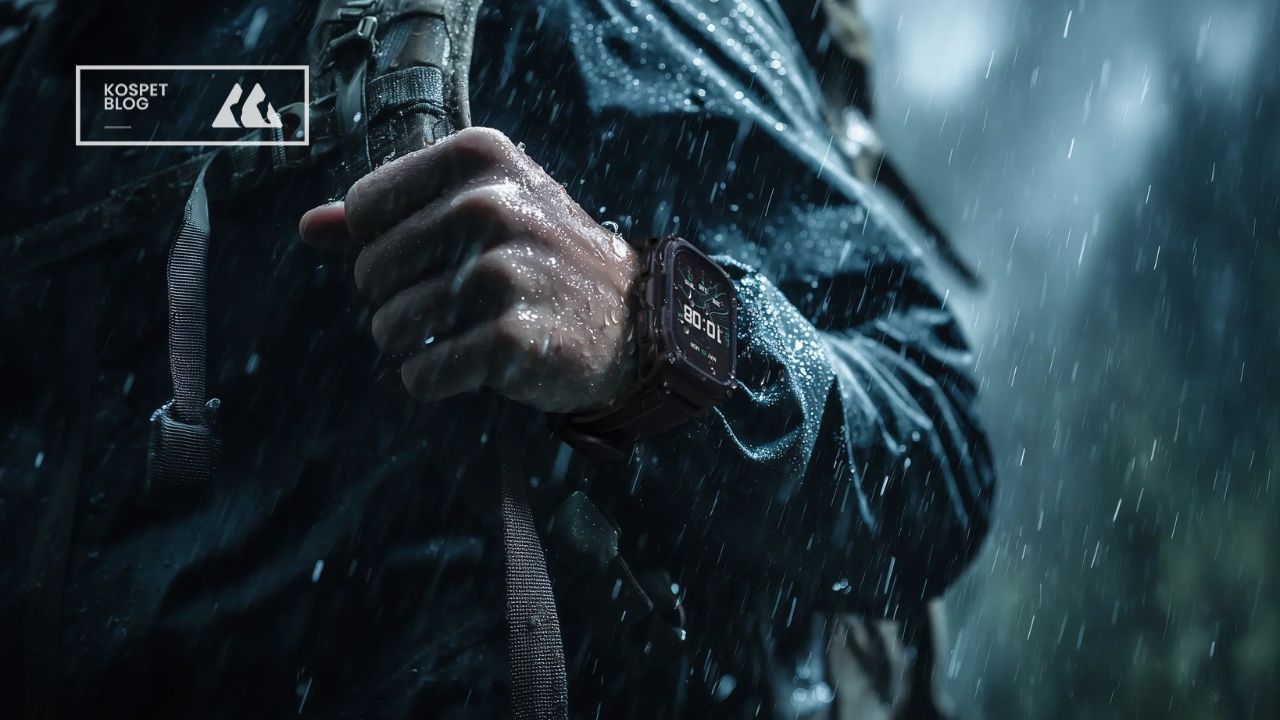




Leave a comment
All comments are moderated before being published.
This site is protected by hCaptcha and the hCaptcha Privacy Policy and Terms of Service apply.